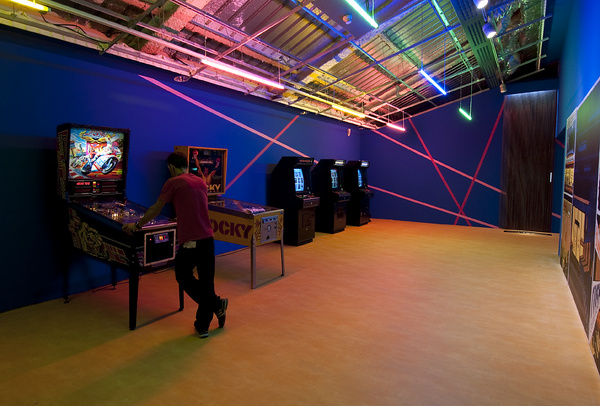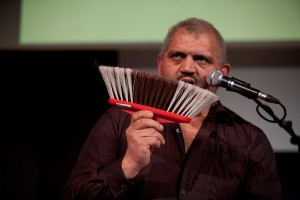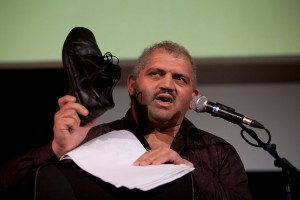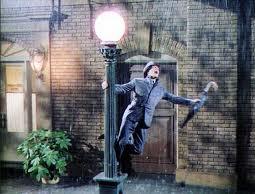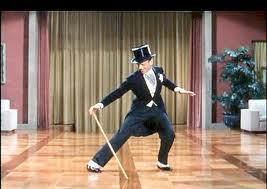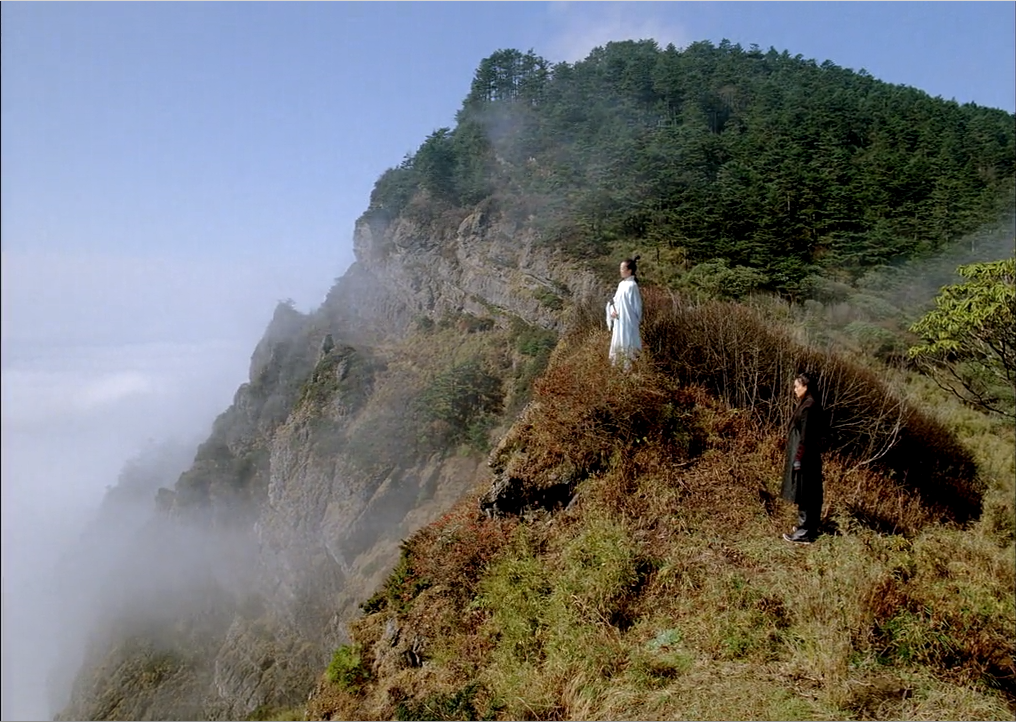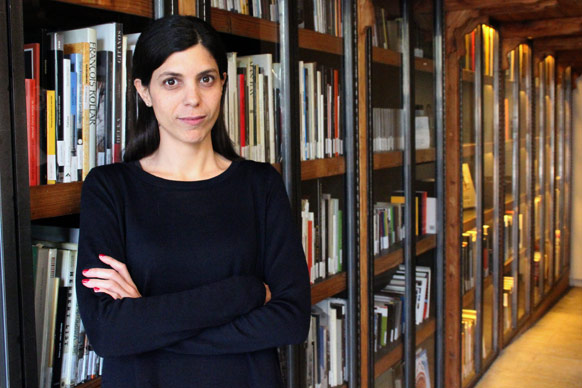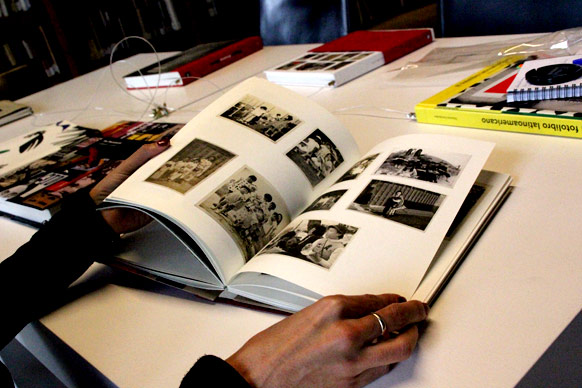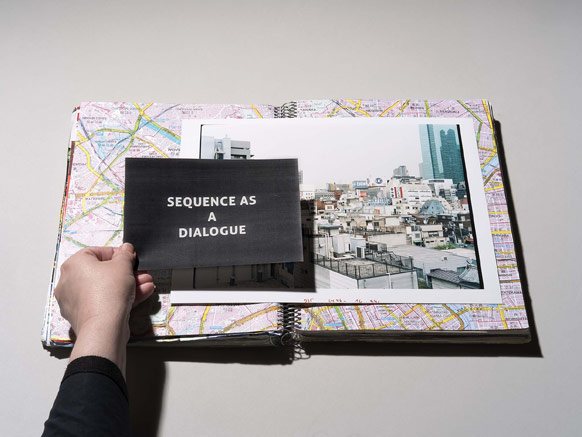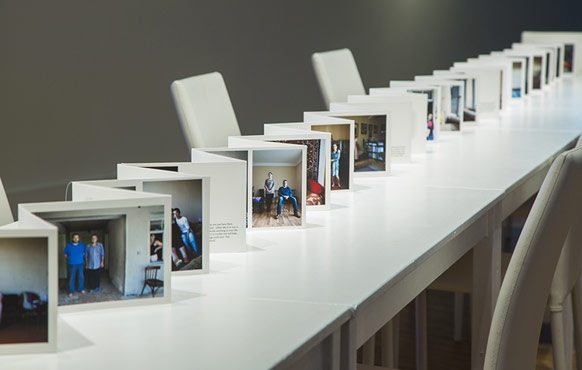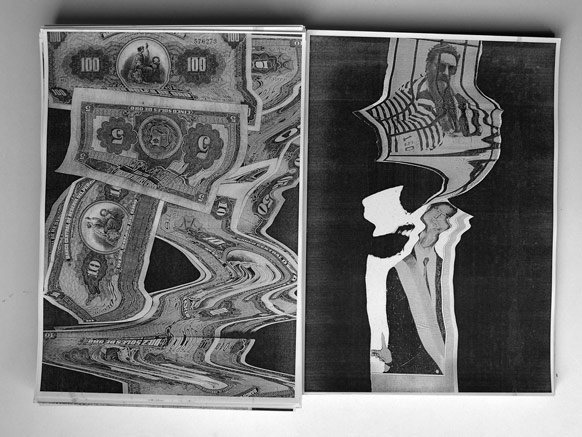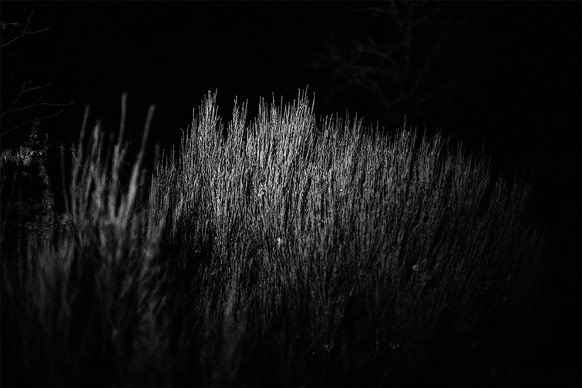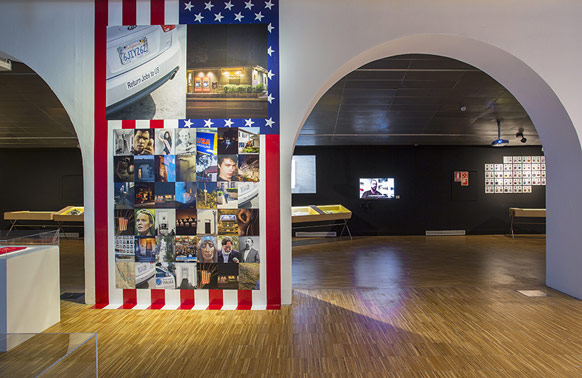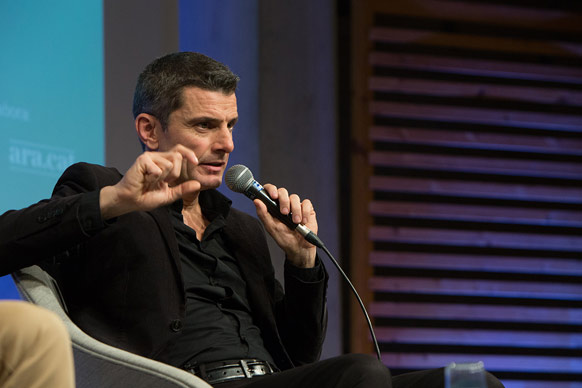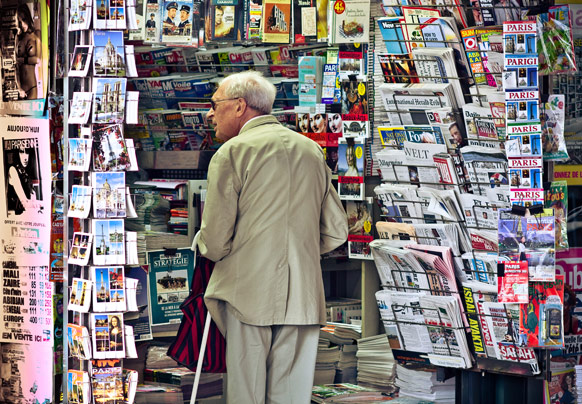Crònica de la jam session WHAT THE FUCK JAMBOREE
El leitmotiv d’una jam session és la improvisació. I la improvisació no té límits ni formals ni estètics. El dia de la Mercè, amb el caliu habitual de dijous a la nit a la Jazz Cava del CCCB, l’esperit What The Fuck, com s’anomenen les jams sessions del Jamboree, posseïa l’espai i tots els qui érem allà per oferir-nos una lliçó inèdita de transgressió. Com s’esdevé cada dilluns en un dels clubs més emblemàtics de la ciutat, el Jamboree de la plaça Reial, el pare de les WTF, Aurelio Santos, iniciava la sessió a la seva manera. Aurelio és una de les persones de la ciutat que encapçala el moviment de defensa de la música en directe. Algú que creu en la música i els músics. Un activista musical que converteix qualsevol sessió en un veritable diàleg entre tots els que hi participen.
Després d’alertar-nos de la possibilitat “única” de veure una exposició sobre el jazz com la que tenim en aquests moments a Barcelona, i anunciar algunes de les sorpreses que alguns consideraven gairebé amenaces sonores, Aurelio va donar pas a “un dels elements que li va canviar la vida”, el saxofonista Llibert Fortuny, “un dels músics més originals, que més estudia i que més estima”. Amb una forta ovació, Llibert Fortuny entrava a l’escenari acompanyat de dos músics de pes: DJ Foster al contrabaix i Ramón Ángel Rey a la bateria.
Crónica de la jam session WHAT THE FUCK JAMBOREE
El leitmotiv de una jam session es la improvisación. Y la improvisación no tiene límites ni formales ni estéticos. El día de la Mercè, con el ambiente habitual de los jueves por la noche en la Jazz Cava del CCCB, el espíritu What The Fuck, tal y como se llaman las jams sessions del Jamboree, poseía el espacio y a todos cuantos estábamos allí para ofrecernos una lección inédita de trasgresión. Tal y como ocurre cada lunes en uno de los clubes más emblemáticos de la ciudad, el Jamboree de la Plaça Reial, el padre de las WTF, Aurelio Santos, iniciaba la sesión a su manera. Aurelio es una de las personas de la ciudad que encabeza el movimiento en defensa de la música en directo. Alguien que cree en la música y en los músicos. Un activista musical que convierte cualquier sesión en un verdadero diálogo entre cuantos participan en la misma.
Tras alertarnos de la posibilidad “única” de ver una exposición sobre el jazz como la que tenemos en estos momentos en Barcelona, y anunciar algunas de las sorpresas que algunos consideraban casi amenazas sonoras, Aurelio dio paso a “uno de los elementos que le cambió la vida”, el saxofonista Llibert Fortuny, “uno de los músicos más originales, que más estudia y a quien más quiere”. Con una fuerte ovación, Llibert Fortuny entraba en el escenario acompañado de dos músicos de peso: DJ Foster al contrabajo y Ramón Ángel Rey a la batería.
Un trio que va encetar la sessió amb uns quants estàndards per anar entrant en calor i que van servir perquè el públic conegués la fantàstica capacitat comunicativa de Llibert Fortuny. “Una jam és com si ara cantem el Sol solet… a veure: tots junts!” “Sol solet, vine’m a veure, vine’m a veure….” Tot el públic cantava, “és el vocabulari amb què els músics ens entenem, aquí, a Tòquio o a Nova York… Partim d’una base comuna i després cadascú fa els solos”. Aurelio, amb el micro entre les mans, movent-se entre el públic, exercia el poder del qual disposà tota la nit: “dinamitzar o dinamitar” la sessió, entrant en diàleg amb el públic i els músics. Deixava anar una mena de roncs que semblaven venir del més enllà i als quals la gent responia rient. La didàctica estava molt bé però ja tocava continuar amb la música!
L’ortodòxia dels primers temes semblava que ens havia fet entrar tranquil·lament en un territori que de cop es va fer inestable. “De jazz ya hablaremos después”, advertia Aurelio al principi. De jams, n’hi ha de molts tipus, algunes més obertes estilísticament i altres de més tancades, però els personatges que aquell dia eren a la cava i que rondaven normalment les revolucionàries jams del WTF ens van donar pistes de per on podia anar la sessió…
Cada músic té un gest. El guitarrista oficial de les WTF, Raúl del Moral, imitava Llibert des d’un costat de l’escenari. Un balanceig constant que es tornà insistència, reiteració d’unes notes que ens portaven cap a algun lloc. De sobte ens vam sentir enmig d’un ritme funk. El jazz també és barreja, oi? Al principi ens havíem fos amb el blues “Wheather changes”, després depenia de qui continués la jam!
El protocol es va trencar totalment. Voro Garcia, un trompetista valencià que fa dues setmanes que resideix a la ciutat, i Raynald Colom, un dels primers músics que el 2001 va encetar les WTF del Jamboree, van envair l’escenari. Abans, però, Aurelio ens va fer entonar l’Aniversari feliç. “Ho diu el Facebook. En Ray fa anys!” I després de tan flamant participació del públic, Pascual Morente va prendre la banqueta del piano i Paco Perera el baix elèctric. Una altra ronda de la jam estava servida.
“Jo vaig veure Dizzy Gillespie a Barcelona”, vaig sentir que deia un senyor a alguns músics que baixaven de l’escenari, “i us felicito, m’agrada molt el que feu! Endavant!!!” Mentrestant, la veu d’Aurelio no parava de reclamar grans aplaudiments per presentar nous pesos pesants: Enrique Oliver al saxo, i un krooner: Miguel Zamora. En un petit moment d’intimitat, els retrobats van decidir quin tema interpretar. Van començar amb “How deep is the Ocean?”, que Fortuny va traduir ―com ha fet amb tots els temes― a la seva manera: “Una vez que fui a…” Si la música és interpretable, per què no ho haurien de ser les paraules?
Feia estona que el batec incipient de l’electrònica sobrevolava la sessió i, finalment, Pablo Schavarzman, manipulant el so amb el seu KAOSS PAD, juntament amb l’hipnòtic BEATBOX d’Aurelio Santos (com s’anomena aquesta manera de fer percussió amb la veu) ja no van deixar l’escenari fins al final. Acompanyant la deriva: Martin Laportilla al baix elèctric, Franco al piano i Fortuny de nou al saxo, filtrat per pedals. Podria ser dance, hip hop, funk… En el darrer assalt els límits van deixar d’existir. La jam havia fet el seu triple salt mortal, havia deixat pas a l’experimentació de cada músic i a la confecció col·lectiva del patchwork final davant del públic que també en formava part. Simonel Bié, cantant de Moçambic, va saltar ―literalment― a l’escenari i ens va fer tornar per moments des del més nou fins als orígens. Música ètnica, electrònica, rap, reggae… Aquell blues del principi quedava ben a prop! La gent no volia marxar mentre cada vegada apareixien més sons nous i ritmes més ballables. La Jazz Cava va demostrar que estava feta a prova de bombes!!! I el públic ho reclamava!
Eva Vila, coordinadora de les CCCB Jam SessionsUn trío que inició la sesión con algunos estándares para ir entrando en calor y que sirvieron para que el público conociera la fantástica capacidad comunicativa de Llibert Fortuny. “Una jam es como si ahora cantamos el Sol solet… a ver: ¡todos juntos!” “Sol solet, vine’m a veure, vine’m a veure….” Todo el público cantaba, “es el vocabulario con el que los músicos nos entendemos, aquí, en Tokio o en Nueva York… Partimos de una base común y después cada uno hace los solos”. Aurelio, con el micro entre las manos, moviéndose entre el público, ejercía el poder con el que contó durante toda la noche: “dinamizar o dinamitar” la sesión, entrando en diálogo con el público y los músicos. Soltaba una especie de ronquidos que parecían proceder del más allá y a los que la gente respondía riendo. La didáctica estaba muy bien, ¡pero ya era hora de seguir con la música!
La ortodoxia de los primeros temas parecía que nos había hecho entrar tranquilamente en un territorio que de repente se hizo inestable. “De jazz ya hablaremos después”, advertía Aurelio al principio. Hay muchos tipos de jams, algunas más abiertas estilísticamente y otras más cerradas, pero los personajes que aquel día se encontraban en la cava y que rondaban normalmente las revolucionarias jams del WTF nos dieron pistas de por dónde podía ir aquella sesión…
Cada músico tiene un gesto. El guitarrista oficial de las WTF, Raúl del Moral, imitaba a Llibert desde una esquina del escenario. Un balanceo constante que se convirtió en insistencia, reiteración de unas notas que nos llevaban a alguna parte. De repente nos sentimos en medio de un ritmo funk. El jazz también es mezcla, ¿verdad? Al principio nos habíamos fundido con el blues “Wheather changes”, ¡después dependía de quien prosiguiera la jam!
El protocolo se rompió del todo. Voro Garcia, un trompetista valenciano que hace dos semanas que reside en la ciudad, y Raynald Colom, uno de los primeros músicos que en 2001 inició las WTF del Jamboree, invadieron el escenario. Sin embargo, antes Aurelio nos había hecho entonar el Cumpleaños feliz. “Lo dice el Facebook. ¡Ray cumple años!” Y después de tan flamante participación del público, Pascual Morente tomó la banqueta del piano y Paco Perera el bajo eléctrico. Otra ronda de la jam estaba servida.
“Yo vi a Dizzy Gillespie en Barcelona”, oí que decía un señor a algunos músicos que bajaban del escenario, “y os felicito, ¡me gusta mucho lo que hacéis! ¡¡¡Adelante!!!” Mientras tanto, la voz de Aurelio no paraba de reclamar fuertes aplausos para presentar a nuevos pesos pesados: Enrique Oliver al saxo, y un krooner: Miguel Zamora. En un pequeño momento de intimidad, los recién reunidos decidieron qué tema interpretar. Empezaron con “How deep is the Ocean?”, que Fortuny tradujo ―como ha hecho con todos los temas― a su manera: “Una vez que fui a…” Si la música es interpretable, ¿por qué no deberían serlo las palabras?
Hacía un buen rato que el latido incipiente de la electrónica sobrevolaba la sesión y, por fin, Pablo Schavarzman, manipulando el sonido con su KAOSS PAD, junto con el hipnótico BEATBOX de Aurelio Santos (tal y como se denomina esta forma de hacer percusión con la voz) ya no dejaron el escenario hasta el final. Acompañando la deriva: Martin Laportilla al bajo eléctrico, Franco al piano y Fortuny de nuevo al saxo, filtrado por pedales. Podría ser dance, hip hop, funk… En el último asalto los límites dejaron de existir. La jam había realizado su triple salto mortal, había dado paso a la experimentación de cada músico y a la confección colectiva del patchwork final ante el público que también formaba parte del mismo. Simonel Bié, cantante de Mozambique, saltó ―literalmente― al escenario y nos hizo volver por momentos desde lo más nuevo hasta los orígenes. Música étnica, electrónica, rap, reggae… ¡Qué cerca quedaba aquel blues del principio! La gente no quería irse mientras cada vez aparecían más sonidos nuevos y ritmos más bailables. ¡¡¡La Jazz Cava demostró estar hecha a prueba de bombas!!! ¡Y el público lo reclamaba!
Eva Vila, coordinadora de las CCCB Jam Sessions










